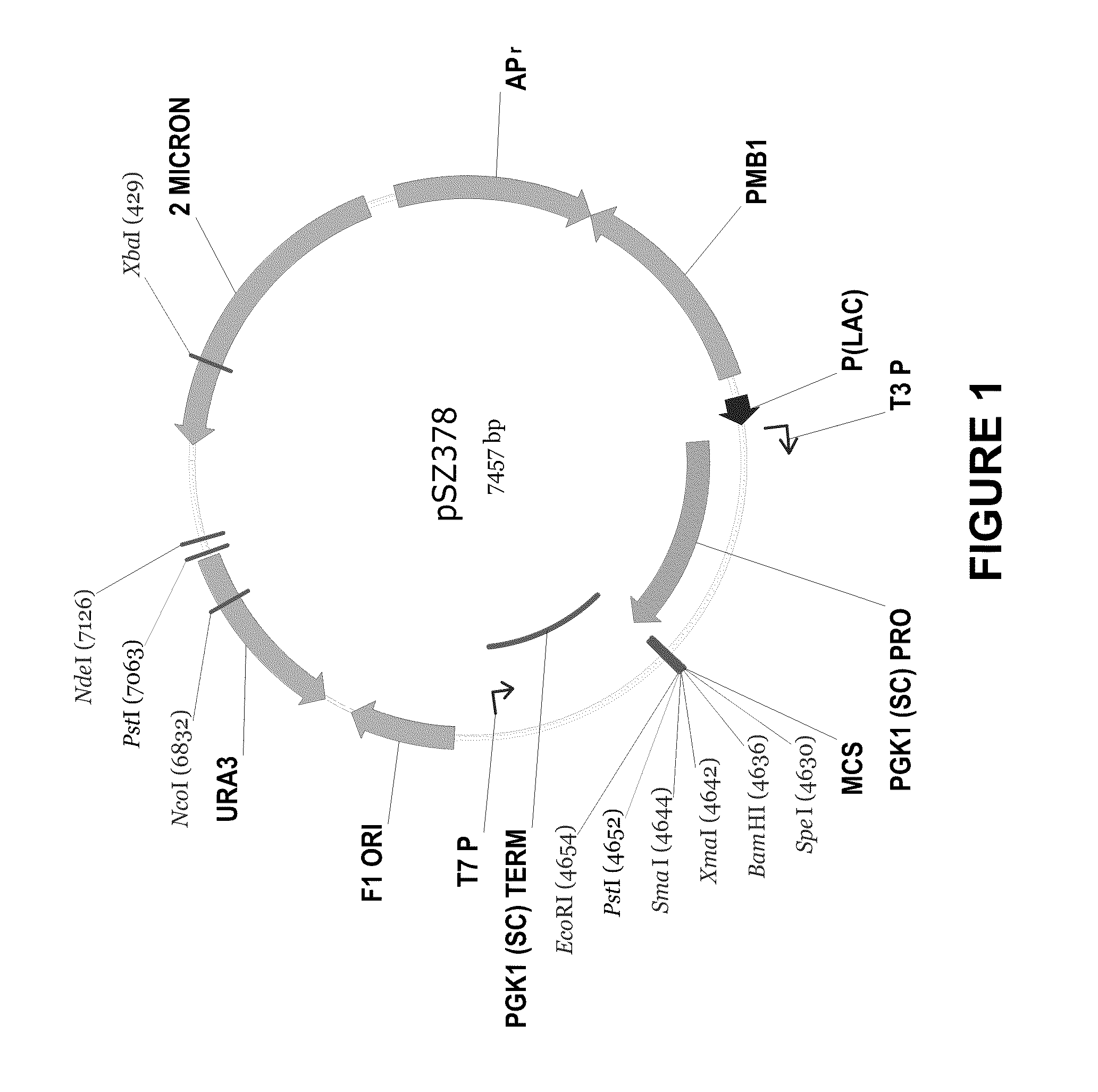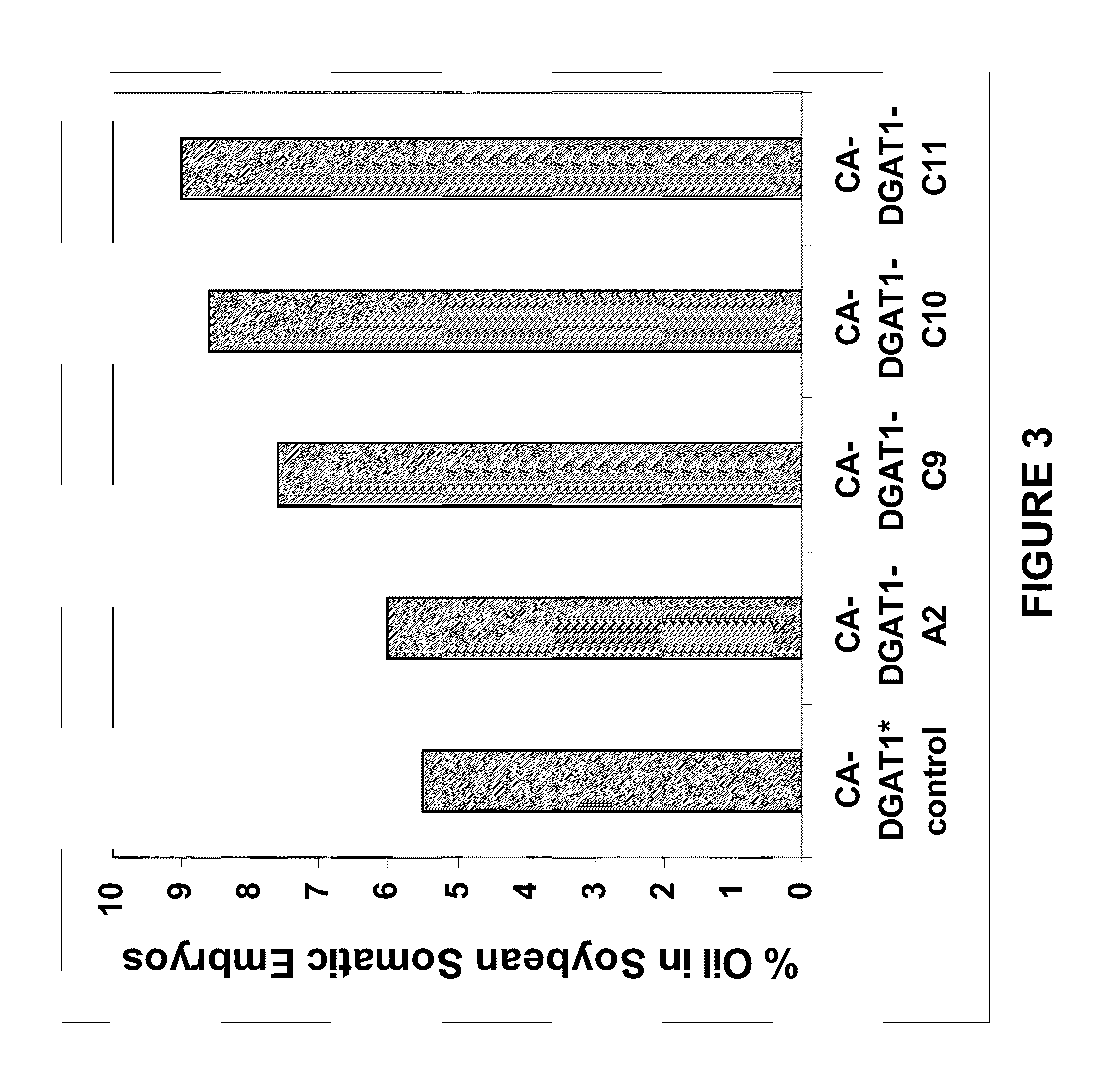DGAT genes for increased seed storage lipid production and altered fatty acid profiles in oilseed plants
a technology of dgat and fatty acid, applied in the field of biotechnology, can solve the problems of slow and expensive introduction into elite lines by traditional breeding techniques, limit the use of conventional plant breeding to alter fatty acid composition and content, etc., and achieve the effect of increasing the total fatty acid conten
- Summary
- Abstract
- Description
- Claims
- Application Information
AI Technical Summary
Benefits of technology
Problems solved by technology
Method used
Image
Examples
example 1
Cloning Type I DGAT cDNAs from Hickory and Hazelnut
[0298]Developing nuts from hickory (Carya ovata), and hazelnut (Corylus americana), were harvested. The shells were cracked open, and the edible portion was removed and quickly frozen in liquid nitrogen, followed by further storage in a −80° C. freezer until needed. The frozen material from one nut each of hickory and hazelnut were ground separately under liquid nitrogen with a mortar and pestle. Total RNA was isolated from each by using a Purescript RNA kit from Gentra Systems (since purchased by Qiagen), and subsequently poly A RNA was isolated from hickory by using an mRNA kit from GE Biosciences. Using poly A RNA as template for hickory, and total RNA as template for hazelnut, first strand cDNA synthesis was done with a SuperScript III kit purchased from Invitrogen using oligo d(T) as primer and following the manufacturer's protocol.
[0299]To obtain partial length hickory and hazelnut DGAT cDNAs, PCR was performed with first stra...
example 2
Expression of Hickory and Hazelnut DGAT cDNAs in Yeast and Determination of DGAT Activity
[0303]A double null Saccharomyces cerevisiae strain with deletions of the DGA1 gene that encodes DGAT and the LRO1 gene that encodes phospholipid:diacylglycerol acyltransferase (PDAT) was created as an oil deficient strain suitable for ectopic expression of DGAT cDNAs from hazelnut and hickory. The double null strain was made by purchasing the strain deficient in the DGA1 (DGAT) gene from Invitrogen (Clone ID: 12501) and then removing the LRO1 (PDAT) gene using homologous recombination.
[0304]Microsomal membrane preparations from yeast cultures transformed with the hazel and hickory DGAT expression vectors PHP32238, PHP32396, and PHP32395, and with the no DGAT control vector pSZ378, were used for DGAT activity assays. For microsomal membrane preparations, the method of Milcamps et al, J Biol Chem 280:5370-5377, was followed, with minor changes. Saccharomyces ceriviseae cultures were grown to earl...
example 3
Expression of CA-DGAT1 in Soybean Somatic Embryos Increases Oil Content and Oleic Acid Content
[0308]A soybean transformation vector KS 394 (SEQ ID NO: 20) was constructed that included the promoter from the soybean β-conglycinin α′ subunit (Beachy et al., EMBO J. 4:3047-3053) driving expression of the wild type hazel DGAT cDNA CA-DGAT1. A control vector KS352 (SEQ ID NO: 21) that contained no DGAT genes was also constructed.
[0309]Soybean embryogenic suspension cultures were transformed with intact plasmid DNA of KS 394 or KS 352 by the method of particle gun bombardment (Klein et al., Nature 327:70 (1987)) using a DuPont Biolistic PDS1000 / HE instrument (helium retrofit). The tissue culture and transformation methods are described in more detail as follows:
Culture Conditions:
[0310]Soybean embryogenic suspension cultures (cv. Jack) were maintained in 35 mL liquid medium SB196 (infra) on a rotary shaker, 150 rpm, 26° C. with cool white fluorescent lights on 16:8 h day / night photoperiod...
PUM
| Property | Measurement | Unit |
|---|---|---|
| temperature | aaaaa | aaaaa |
| temperature | aaaaa | aaaaa |
| pH | aaaaa | aaaaa |
Abstract
Description
Claims
Application Information
 Login to View More
Login to View More - R&D
- Intellectual Property
- Life Sciences
- Materials
- Tech Scout
- Unparalleled Data Quality
- Higher Quality Content
- 60% Fewer Hallucinations
Browse by: Latest US Patents, China's latest patents, Technical Efficacy Thesaurus, Application Domain, Technology Topic, Popular Technical Reports.
© 2025 PatSnap. All rights reserved.Legal|Privacy policy|Modern Slavery Act Transparency Statement|Sitemap|About US| Contact US: help@patsnap.com



